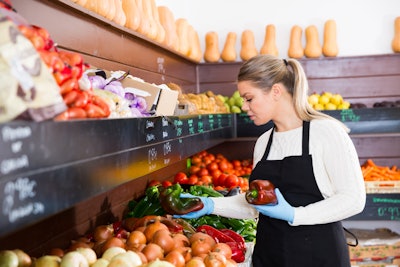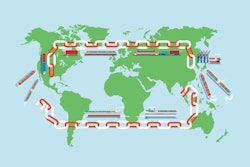
The last two years have created unprecedented challenges for the global supply chain. Amid growing global demand for fresh fruits and vegetables, the period has been especially difficult for food companies. Products with an expiration date are spending more time in storage and in transit.
While the pandemic has raised awareness of these concerns, the truth is that the food supply chain has been challenged for a long time. Globally, about one-third of the food produced for human consumption goes to waste, according to the United Nations Food and Agriculture Organization. Of all food categories, fruits and vegetables perform the worst -- nearly half of the produce grown worldwide does not get consumed.
No manufacturer could endure anything close to those kinds of losses. Indeed, these inefficiencies leading to food loss and waste already have tremendous costs. They have a negative impact on the environment and are enormous drain on industry profitability. As empty supermarket shelves proliferate nationwide, it’s become far clearer that access to a wide range of fresh produce year-round depends on the supply chain functioning smoothly. Now that food logistics is in the spotlight, it’s imperative for the produce industry to address the challenges and needs that arise during an elongated supply chain.
The central problem faced by produce growers, packers, distributors and retailers is that virtually every fruit shipped is impacted by the normal ripening process that only accelerates once it is harvested. Over the years, the supply chain has become increasingly reliant on the “post-harvest” industry to advance innovative solutions to help preserve produce quality and shelf life. In addition, all the different varieties of fruits and vegetables can benefit from specific solutions designed to fit its needs. If an apple orchard in Washington state sends fruit by truck to New York and the same fruit by boat to Asia, those two shipments may need different solutions if they are going to be fresh on arrival. At every step in the apples’ journey — from pre-harvest to the grocery store shelf — companies can take action to better reduce spoilage and minimize waste.
Obvious and non-obvious solutions
Reducing food waste and loss requires both direct and indirect solutions. The direct solutions include what specific post-harvest solution gets applied to preserve its freshness, quality and appearance. These range from ethylene inhibitors that temporarily block the release of ethylene, the natural hormone produced by many types of fruit as it “respires” as part of its normal freshness cycle to plant-based coatings that act as a “second skin” to prevent the loss of moisture and quality. All of these solutions have a role to play. But, it’s no longer just enough to use these solutions. As supply chains become elongated and more complex, companies are increasingly looking to indirect solutions.
We live in a world of data and harnessing its capabilities in the battle to reduce food loss in the produce industry is a significant opportunity. Artificial intelligence (AI) and machine learning can combine deep agricultural expertise with historical data to provide the most complete and comprehensive information on how to protect a specific fruit or vegetable, making a specific journey. These digital technologies can enable decision makers throughout the supply chain to get better information on produce quality, harvest timing, packing, storage, traceability and market conditions. With better information they can make better decisions.
Let’s go back to that hypothetical orchard in Washington. After harvest, it might typically apply a variety of post-harvest solutions from coatings to ethylene inhibitors. Given ongoing issues with labor shortages that can also contribute to fruit loss due to delays of harvest timing, growers can also apply solutions to the fruit while still on the tree, yielding more time to effectively plan for harvest and manage labor more efficiently. Leveraging digital solutions in addition to post-harvest products allows for an easier and earlier prediction of how an unforeseen problem will affect fruit quality throughout the supply chain.
When applied at scale, smarter use of the right post-harvest products for the right fruit can make a real difference. It reduces waste and better enables growers and processors to capture the full value of their crop, potentially boosting ROI.
Bringing it all together
The food industry’s work has never been more urgent. In the next 30 years, Earth’s population will grow from nearly 8 billion today to almost 10 billion by 2050. The current amount of wastefulness isn’t acceptable if we are going to meet this need.
The good news is the amount of “low-hanging fruit.” When 40-50% of produce grown doesn’t get consumed, virtually every company in the produce supply chain has room to improve. While more developed markets in the United States and Europe have benefited from an array of post-harvest solutions, these solutions are not always as readily available in many emerging and developing countries. And, while the global apple industry has been an early adopter of post-harvest technology, many other fruit and produce categories are in a more nascent phase or are grown and harvested in markets that lack a modern infrastructure or an understanding of the availability of applicable solutions. Addressing that is a major opportunity for the industry.
The way to do so is to understand that every fruit or vegetable produced in every part of the world must overcome unique difficulties to reach its destination in sellable condition. When operators examine existing procedures with that in mind and develop customized solutions, everyone can benefit -- growers, processors, retailers, consumers and the planet. There has never been a more important or exciting time to do what we do.


















